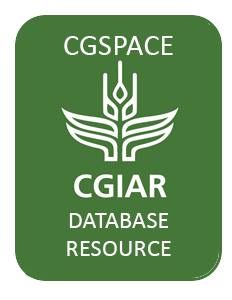About Springer
Throughout the world, we provide scientific and professional communities with superior specialist information – produced by authors and colleagues across cultures in a nurtured collegial atmosphere of which we are justifiably proud.
We foster communication among our customers – researchers, students and professionals – enabling them to work more efficiently, thereby advancing knowledge and learning. Our dynamic growth allows us to invest continually all over the world.
We think ahead, move fast and promote change: creative business models, inventive products, and mutually beneficial international partnerships have established us as a trusted supplier and pioneer in the information age.
Members:
Resources
Displaying 1186 - 1190 of 1195Modelling of non-point source pollution in a watershed using remote sensing and gis
Assessment of the environmental impact of Non Point Source (NPS) pollutants on a global, regional and localized scale is the key component for achieving sustainability of agriculture as well as preserving the environment. The knowledge and information required to address the problem of assessing the impact of NPS pollutants like Nitrogen (N), Phosphorus (P), etc., on the environment crosses several sub-disciplines like remote sensing, Geographical Information System (GIS), hydrology and soil science.
Integrated modelling of climate change impacts in Norhteastern Brazil
Regeneration, growth and sustainability of mahogany in Mexico's Yucatan forests
Big-leaf mahogany was studied on nine mixed-species stands that became established naturally between 2 and 75 years ago after catastrophic disturbances (hurricane blowdown, fire, or bulldozer clearing). More than 50% of adult big-leaf mahogany trees had survived a severe hurricane, leaving 2.8 seed trees ha-1. After fire, 29% to 100% of adult Mahogany trees survived, leaving an average of 1.4 seed trees ha 1. Thirty or more years later, postdisturbance mahogany trees were found at densities of 18 ha-1 after fire, as compared to 6 ha-1 after a hurricane.
Towards a standardised procedure for determining the potentially mineralisable nitrogen of soil
Reliable techniques for predicting N mineralisation dynamics in soil are required for sustainable management of land resources. The concept of potentially mineralisable N (N ₀) and its determination procedures were re-appraised in this study. Leaching soil before incubation removed considerable amounts of soluble organic N. But the leached soils had higher rates of net N mineralisation than the unleached controls during a subsequent 2-week incubation, suggesting that using the total amount of leached- (organic + inorganic) N for calculating N ₀ may not be warranted.
Satellite remote sensing of wetlands
To conserve and manage wetland resources, it is important to inventory and monitor wetlands and their adjacent uplands. Satellite remote sensing has several advantages for monitoring wetland resources, especially for large geographic areas. This review summarizes the literature on satellite remote sensing of wetlands, including what classification techniques were most successful in identifying wetlands and separating them from other land cover types. All types of wetlands have been studied with satellite remote sensing.




